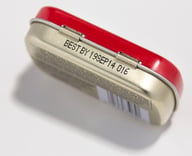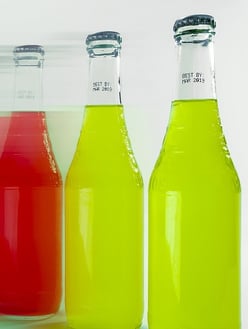 Confusion over "Best By", “Use By” and "Sell By" dates has contributed to massive amounts of food waste in the US. This confusion stems from conflicting understanding of dates safety and quality meaning. Consumers are likely to throw away food that is passed the date that's labeled on the package even if it's just a sell by date and/or is perfectly safe to eat.
Confusion over "Best By", “Use By” and "Sell By" dates has contributed to massive amounts of food waste in the US. This confusion stems from conflicting understanding of dates safety and quality meaning. Consumers are likely to throw away food that is passed the date that's labeled on the package even if it's just a sell by date and/or is perfectly safe to eat.
To combat this, U.S. Senator Richard Blumenthal and Congresswoman Chellie Pingree introduced legislation to standardize food date labeling. This legislation was just proposed so we don’t know yet if it will become law, however, food powerhouse manufacturers like Nestle and Campbell Soup were present with Blumenthal and Pingree to show support for this change.
As mentioned in Packaging World, “The Food Date Labeling Act aims to reduce consumer confusion, simplify regulatory compliance for companies, and cut supply-chain and consumer waste of food and money. The bill establishes a uniform national system for date labeling that clearly distinguishes between foods that bear a label indicating peak quality from foods that bear a label indicating they may become unsafe to consume past the date. This bill would also ensure that food is allowed to be sold or donated after its quality date, and educate consumers about the meaning of new labels so that they can make better economic and safety decisions.”
In the meantime, what do these current labels mean?

Best-By dates tell the consumer when the food is likely not going to be at its ideal quality. That doesn't necessarily mean it's not safe to eat.
Use-By dates are similar to “best by” dates. They communicate a date when the food manufacturer has determined the quality of the food has reduced. Again, it doesn’t mean the food is unsafe to eat, just that it might not taste as good.
Sell-By dates tell the retailer when to remove the item from the shelf. What causes confusion for the customer is the cutoff they should have for consuming the product. Do they have two days beyond that date? Is it safe to eat it a week after that sell by date passes?
When “best by” and “sell by” dates are understood as “not safe to eat by” dates, you can see where food waste becomes an issue. The proposed legislation aims to reduce this confusion as well as increasing consumer awareness of when food has gone bad.
Make Coding Your Packaging Easy
If you are a food manufacturer, there are a few ways you can add these dates to your packaging. The least practical way is to include the date in the original artwork and have it printed on press. If you choose to do that, it’s because you know that all the products you’re packaging will have the same “best by” date. That can be tricky to plan out and could leave you with either too many obsolete labels or not enough. Variably printed dates and codes can be added on press, but again, there are big drawbacks. You could end up with more inventory than you need of a certain date and you’ll need to pre-plan the labels in more detail than if you were coding on the spot.
The two most common ways to add a date code to your packaging or label is with a thermal transfer / direct thermal printer or a continuous ink jet printer.
If you’re going to add variable information to you label like weight, flavor, ingredients, you can add a date code to the label as you print that information. Whether you are applying food labels by hand from a stand-alone printer or with a label printer-applicator, the date code can be programmed using labeling software like Legitronic.
 The most practical way to add a date code to your product is with a continuous ink jet printer.
The most practical way to add a date code to your product is with a continuous ink jet printer.
Date Coding with Continuous Ink Jet Printers
The most popular use of CIJ coders is date coding. Instead of being limited to printing on the label, you can apply ink directly to the bottle, box, clamshell and more. Ink jet can be applied to nearly any substrate you can think of so you don’t have to worry about changes from glass to aluminum or corrugate boxes to plastic containers.
Let’s say your packaging line is filling and packing hot sauce bottles. As the empty bottle goes through many stages of filling, capping, and labeling, you can easily add a BestCode ink jet system to your line so as the bottles fly by on the conveyor, a date code is applied seamlessly.
Changing the date is easy too. With a 10.4” LCD touch screen, your packaging operators can make updates to the “best if used by” dates.
Talk to a Weber BestCode expert to learn about date coding with BestCode Continuous Ink Jet Systems. Weber can help you determine the best food labeling option for your container and operation.


